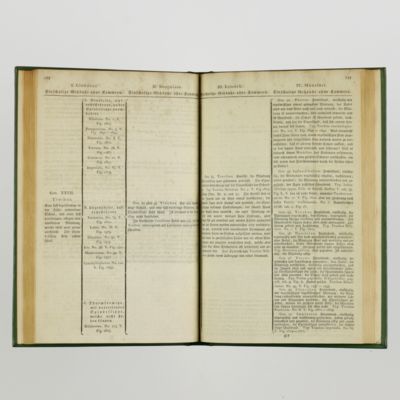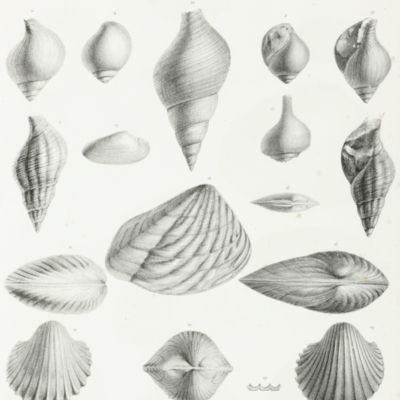Carus, J. V.
Icones zootomicae. Mit Originalbeiträgen der Herrn G. J. Allman, C. Gegenbauer, Th. H. Huxley, Aln. Kölliker, H. Müller, M. S. Schultze, C. Th. E. von Siebold und F. Stein. Erste Hälfte oder Tafel I-XXIII: Die wirbellose Thiere. [All published]
Leipzig, Wilhelm Engelmann, 1857. Folio (34.1 x 44.0 cm). [ii], iv pp., 23 finely engraved plates, partly in chromolithography with explanatory text leaves. Contemporary half cloth over plain boards. Original paper label with script title on the spine.
An excellent collection of illustrations of the morphology, anatomy, and histology of invertebrates, such as molluscs (five plates), jellyfish, starfish, crustaceans, and insects. The plates are exceptionally large. The editor, Carl Gustav Carus (1789-1869), "...was a German physiologist and painter, born in Leipzig, who played various roles during the Romantic era. A friend of Johann Wolfgang von Goethe, he was a many-sided man: a doctor, a naturalist, a scientist, a psychologist, and a landscape painter who studied under Caspar David Friedrich. In 1811 he graduated as a doctor of medicine and a doctor of philosophy. In 1814 he was appointed professor of obstetrics and director of the maternity clinic at the teaching institution for medicine and surgery in Dresden. He wrote on art theory. From 1814 to 1817 he taught himself oil painting working under Caspar David Friedrich, the famous landscape painter. He had already taken drawing lessons from Julius Diez and subsequently studied under Julius Schnorr von Carolsfeld at the Oeser drawing academy. He is best known to scientists for originating the concept of the vertebrate archetype, a seminal idea in the development of Darwin's theory of evolution. In 1836, he was elected a foreign member of the Royal Swedish Academy of Sciences" (Wikipedia). The work was never expanded beyond the 23 plates and descriptive text present here. This, however, covers all the invertebrate groups, as intended. Provenance: the medical doctor, Karl Theodor, Duke in Bavaria (1839-1909), who founded the Augenklinik Herzog Carl Theodor (the Duke Charles Theodore Eye Clinic) in Munich in 1895. A fine and very clean copy. Rare in such condition. Nissen ZBI, 831.
![Icones zootomicae. Mit Originalbeiträgen der Herrn G. J. Allman, C. Gegenbauer, Th. H. Huxley, Aln. Kölliker, H. Müller, M. S. Schultze, C. Th. E. von Siebold und F. Stein. Erste Hälfte oder Tafel I-XXIII: Die wirbellose Thiere. [All published]](https://www.schierenberg.nl/media/cache/product_thumb/68775/68775_x.jpg)

![image for Natural history of Victoria. Prodromus of the zoology of Victoria; figures and descriptions of the living species of all classes of the Victorian indigenous animals. Decade XX. [Complete Decade].](https://www.schierenberg.nl/media/cache/product_thumb/72797/72797_x.jpg)
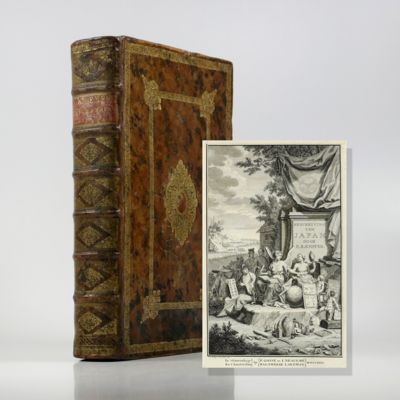
![image for Histoire naturelle des poissons de la France. Avec 220 figures dessinées d'après nature. I, II, III [AND] Histoire naturelle des poissons de la France. Supplément. Avec 7 figures dans le texte. [Complete].](https://www.schierenberg.nl/media/cache/product_thumb/16534/16534.jpg)
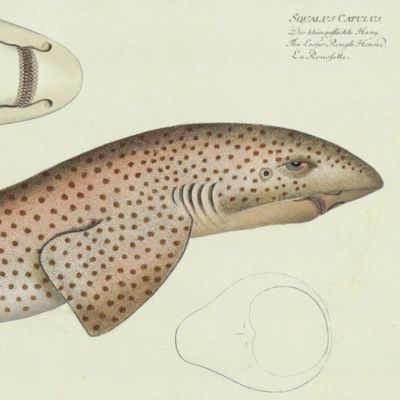
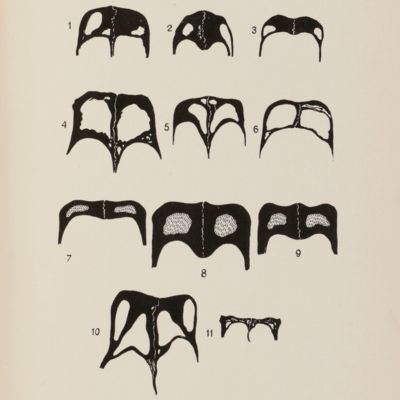
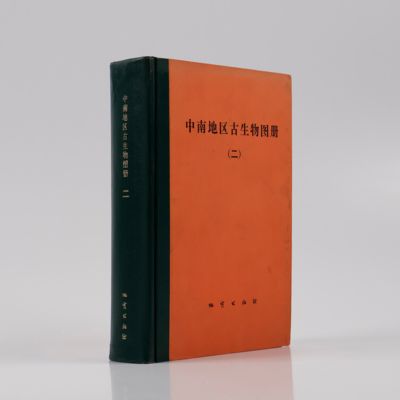
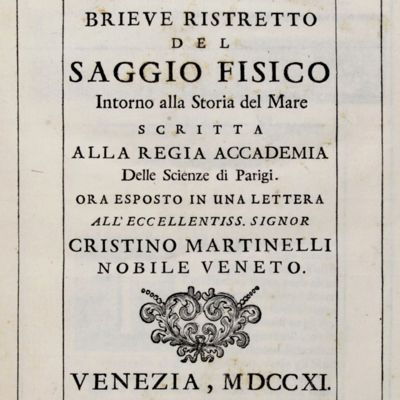
![image for Ophiures recueillis par l'Investigator dans l'Océan Indien. I. Les ophiures de mer profondes [AND] Ophiures recueillis par l'Investigator dans l'Océan Indien II. Les ophiures littorales.](https://www.schierenberg.nl/media/cache/product_thumb/60990/60990_x.jpg)

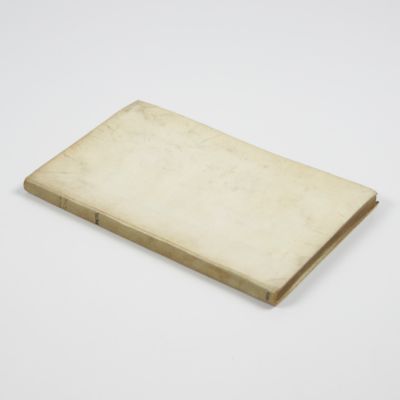
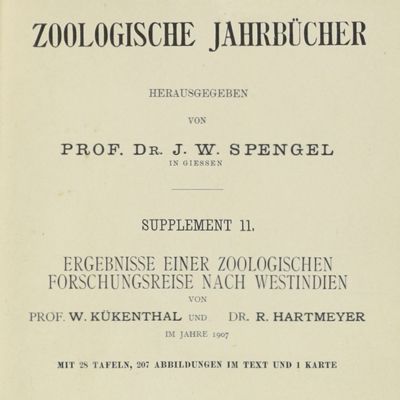
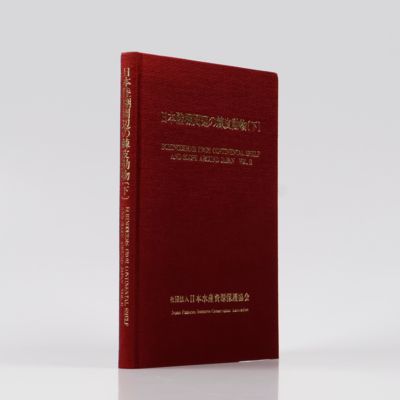
![image for Ophidia. <em> Tropidonotus natrix</em>. [Grass snake]. Tab. 18.](https://www.schierenberg.nl/media/cache/product_thumb/72068/72068_x.jpg)

![image for Album preisgekrönter Hunde der ersten Internationalen Ausstellung des Vereins zur Veredelung der Hunderacen zu Hannover. [Extremely rare complete copy].](https://www.schierenberg.nl/media/cache/product_thumb/72046/72046_x.jpg)
![image for Report of the First Scientific Expedition to Manchoukuo. Under the leadership of Shigeyasu Tokunaka. June - October 1933. Section II [Geology]. Part I-IV. [Complete].](https://www.schierenberg.nl/media/cache/product_thumb/51507/51507.jpg)
![image for Allgemeine Naturgeschichte der Fische - Naturgeschichte der ausländischen Fische. Plate CXX "Embrio squali pristis. Ein ungebohrner Soegefisch. L'embrion de la scie." [Sawfish, unborn].](https://www.schierenberg.nl/media/cache/product_thumb/70081/70081_x.jpg)
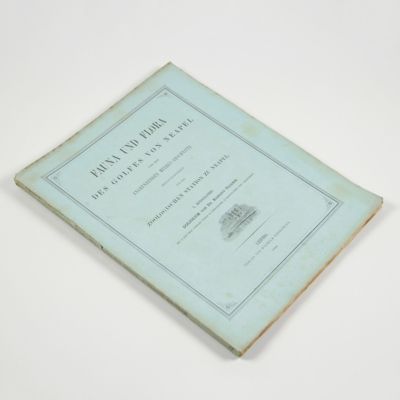
![image for Catalogo delle conchiglie componenti la collezione Rigacci. Parte prima. Conchiglie viventi. [AND] Necrologia di Giovanni Rigacci.](https://www.schierenberg.nl/media/cache/product_thumb/75087/75087_x.jpg)
![image for Die Pflanzenthiere in Abbildungen nach der Natur mit Farben erleuchtet nebst Beschreibungen. [AND] Fortzetzungen der Pflanzenthiere in Abbildungen nach der Natur mit Farben erleuchtet nebst Beschreibungen.](https://www.schierenberg.nl/media/cache/product_thumb/69049/69049_x.jpg)
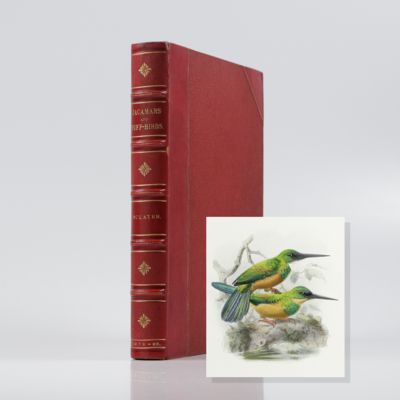
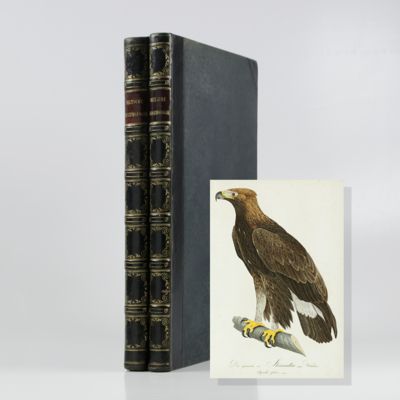
![image for The British Carboniferous Crinoidea. Volumes I-II [FULL COMPLETE SET in ten original parts].](https://www.schierenberg.nl/media/cache/product_thumb/24380/24380_x.jpg)
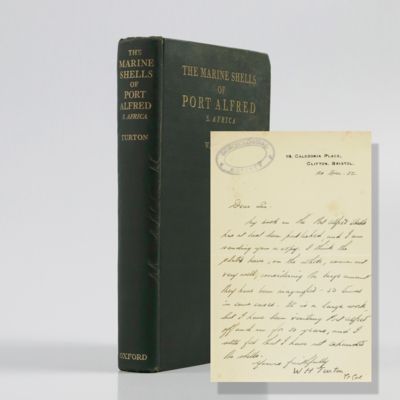
![image for Observations sur le Lias du Département de la Moselle. Première Partie - Deuxième Partie. [Complete].](https://www.schierenberg.nl/media/cache/product_thumb/72019/72019_x.jpg)
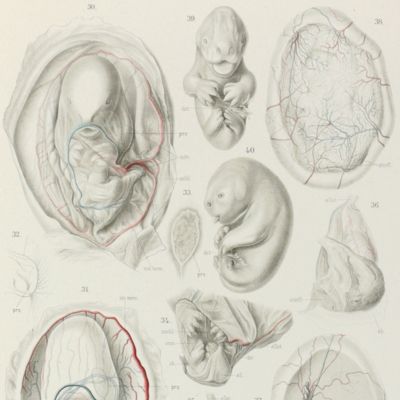
![image for [Alert voyage] Report on the zoological collections made in the Indo-Pacific Ocean during the voyage of the HMS Alert 1881-1882.](https://www.schierenberg.nl/media/cache/product_thumb/75370/75370.jpg)
![image for Giant lizard, snake, small lizard and bird [Plate 99 of Seba's <em>Locupletissimi rerum naturalium thesauri accurata descriptio</em>].](https://www.schierenberg.nl/media/cache/product_thumb/72404/72404_x.jpg)
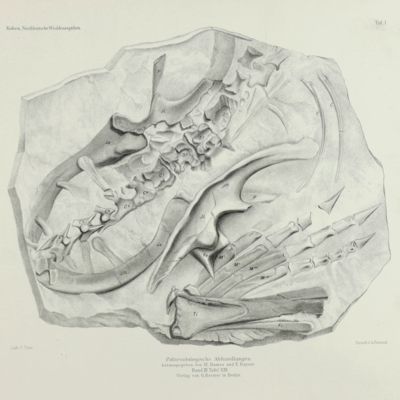
![image for Traité de Paléontologie où histoire naturelle des animaux fossiles considérés dans leurs rapports zoologiques et géologiques. [Text and atlas, complete].](https://www.schierenberg.nl/media/cache/product_thumb/74907/74907_x.jpg)
